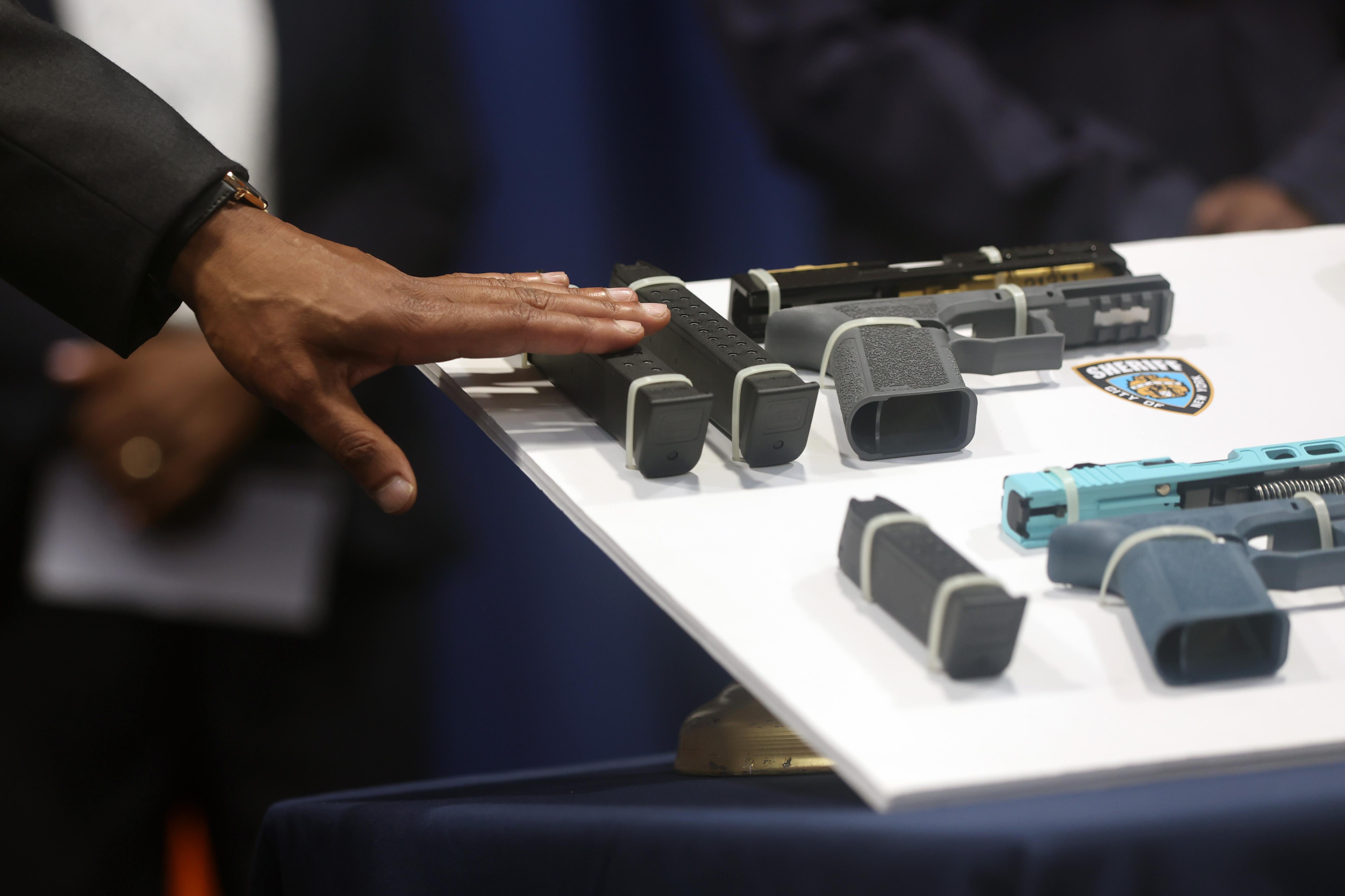For decades, federal law has forbidden gun owners from scratching out the serial numbers that manufacturers are legally required to place on firearms. The reason is obvious: These serial numbers help state and federal law enforcement trace guns that are used in crimes and identify suspected shooters. Indeed, the only apparent reason anyone would remove a serial number is to avoid becoming a suspect after their gun is used illegally. On Wednesday, however, a federal judge ruled that the law prohibiting alteration of serial numbers violates the Second Amendment. Why? Because serial numbers were virtually nonexistent when the amendment was ratified in 1791, so the government has no power to mandate them today.
This decision in United States v. Price by U.S. District Judge Joseph R. Goodwin, a Bill Clinton appointee, may sound shocking. But it is a perfectly plausible application of the Supreme Court’s June ruling in New York State Rifle & Pistol Association v. Bruen. In that case, Justice Clarence Thomas declared all gun restrictions presumptively unconstitutional if they infringe on “the individual right to armed self-defense.” (The Constitution says nothing about “self-defense,” but Thomas gleaned this right from its penumbra.) A gun restriction may only survive legal scrutiny, the justice declared, if it had an “analogue” in 1791, when the Second Amendment was ratified, or 1868, when it was imposed on the states. The burden falls on the government to prove the existence of a historical analogue.
Thomas’ test has already wreaked havoc in the lower courts. One judge has struck down a Texas law that prohibits 18 to 20-year-olds from carrying a handgun outside the home. People under 21 are significantly more likely to commit gun homicides—but in Bruen, Thomas announced that courts may never consider the real-world, life-saving impact of gun safety laws when gauging their constitutionality. A different Texas judge invalidated a federal law barring individuals from purchasing a handgun while they’re under indictment, even for a violent felony offense. Just last week, another judge struck down New York’s ban on concealed carry in airports, train stations, domestic violence shelters, summer camps, the subway, and other “sensitive locations.” Now Goodwin, who sits in West Virginia, has joined the chorus of lower court judges who feel that Bruen obliges them to strike down longstanding, widely accepted firearm laws.
Goodwin’s conclusion might sound bizarre, but his analysis closely follows Thomas’ test. First, he asked whether the federal ban on possession of a gun with an “obliterated” serial number infringes on the right to self-defense. He found that it does, presenting the hypothetical example of a father who buys a gun, removes the serial number, dies, and leaves it to his daughter. Both father and daughter’s ownership of the firearm would be a federal crime. And that, Goodwin wrote, “is the definition of an infringement on one’s right to possess a firearm.”
The only remaining question is whether the government could find an analogous regulation from 1791 or 1868 that restricted the possession of guns with an altered serial number. It could not, for a fairly obvious reason: Serial numbers only became common following the mass production of firearms, which took off in the decades after the Civil War. Federal law did not compel any manufacturers to use them until 1934. And Congress did not require almost all guns to include a serial number until 1968, when it determined (correctly) that they would facilitate the investigation of violent crime. These laws proved helpful in the government’s mission “to attack the black market in firearms” and track down individuals who used firearms to commit crimes. Yet serial numbers were largely unknown to the Framers, Goodwin wrote. And so the Second Amendment confers a right to remove them from modern weapons.
Goodwin acknowledged the “argument” that “firearms with an obliterated serial number are likely to be used in violent crime and therefore a prohibition on their possession is desirable.” But he explained that this argument “is the exact type of means-end reasoning the Supreme Court has forbidden me from considering.” Even if the serial number law demonstrably saved tens of thousands of lives each year, that fact would be totally irrelevant to the constitutional analysis.
These laws almost certainly do save lives. When law enforcement officers recover a weapon from a crime, they check its serial number against a federal database. The results can help them track down the last known seller and buyer of the firearm, who may provide information that’s critical to the investigation. It might lead them straight to the suspect if he bought the gun legally. If not—if he stole the weapon, for instance—the serial number will lead law enforcement to the last known owner, who can provide information about the theft that could lead to the suspect’s eventual arrest. The lack of a serial number is a major reason why ghost guns are so dangerous, and why they are becoming a ubiquitous tool in violent crimes: Criminals exploit their untraceability to elude detection.
Under Bruen, though, none of this matters. All that counts is that serial number laws arose over the last century, so they are too modern to comport with the Second Amendment. Goodwin made this point over and over again; it almost sounded like he was quietly protesting the extreme and dangerous results demanded by the Bruen test. Lower courts, of course, must adhere to the Supreme Court’s decisions, and Goodwin did so respectfully and comprehensively. In the process, though, he repeatedly reminded readers that he had no choice but to follow Bruen to its outrageous logical endpoint. His decision thus doubled as a warning: The Supreme Court’s Second Amendment jurisprudence has grown so radical that it now shields criminals trying to conceal their involvement in a violent crime.
In other words, Goodwin has teed up a perfect test case to see whether the conservative justices are truly ready to embrace the deadly and devastating consequences of their own revolutionary ruling.
